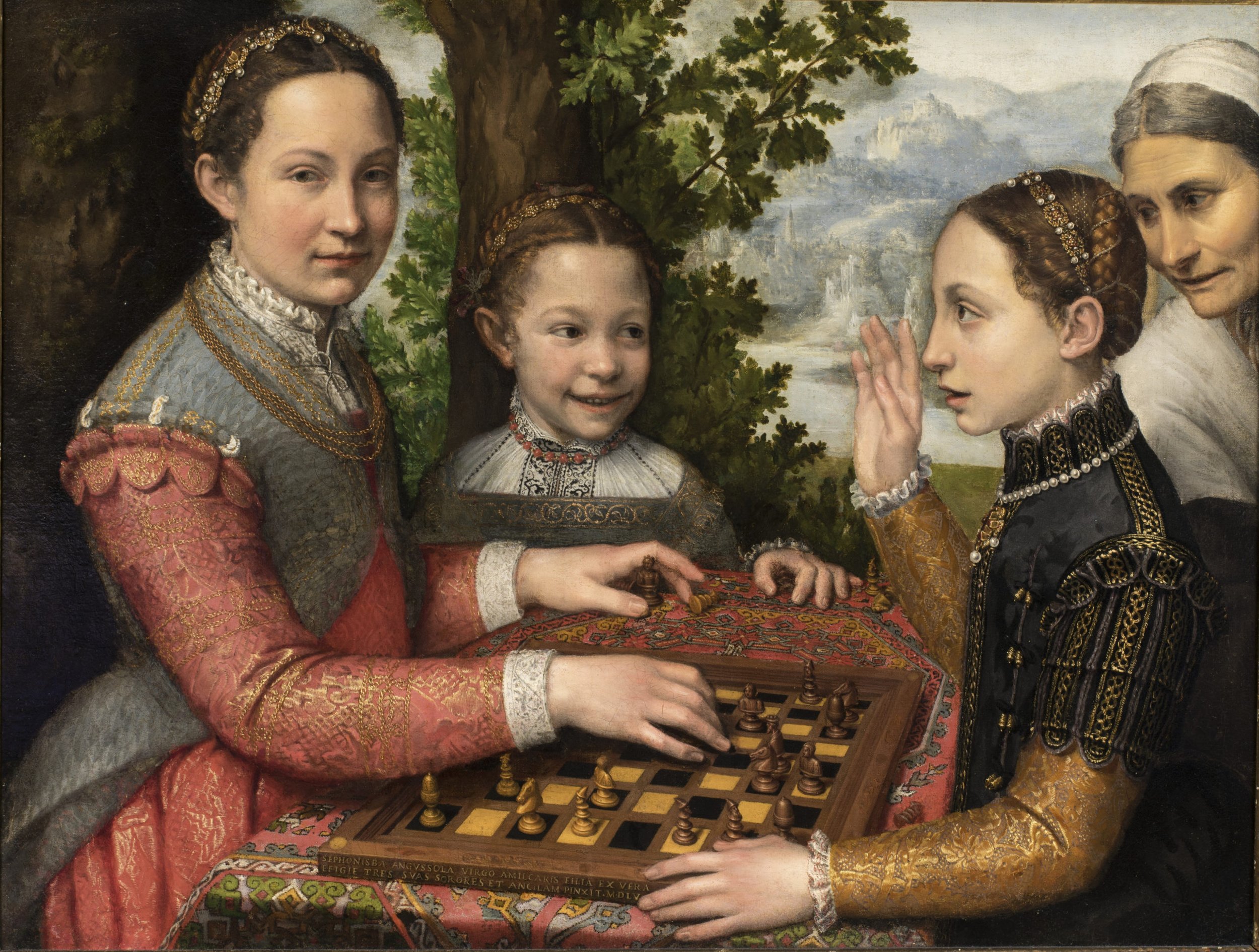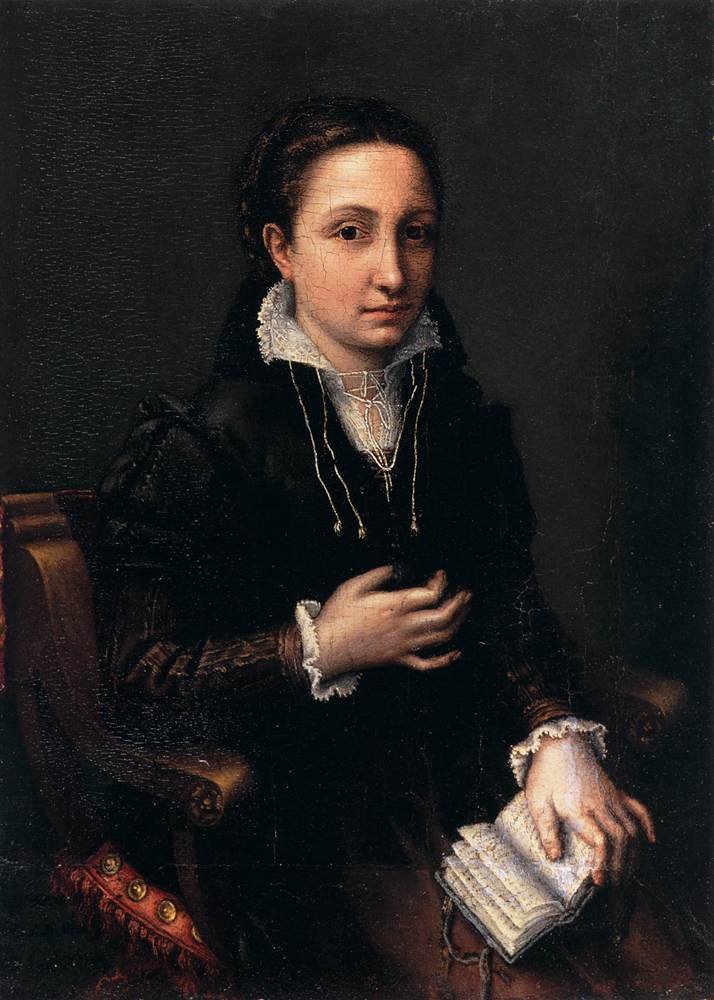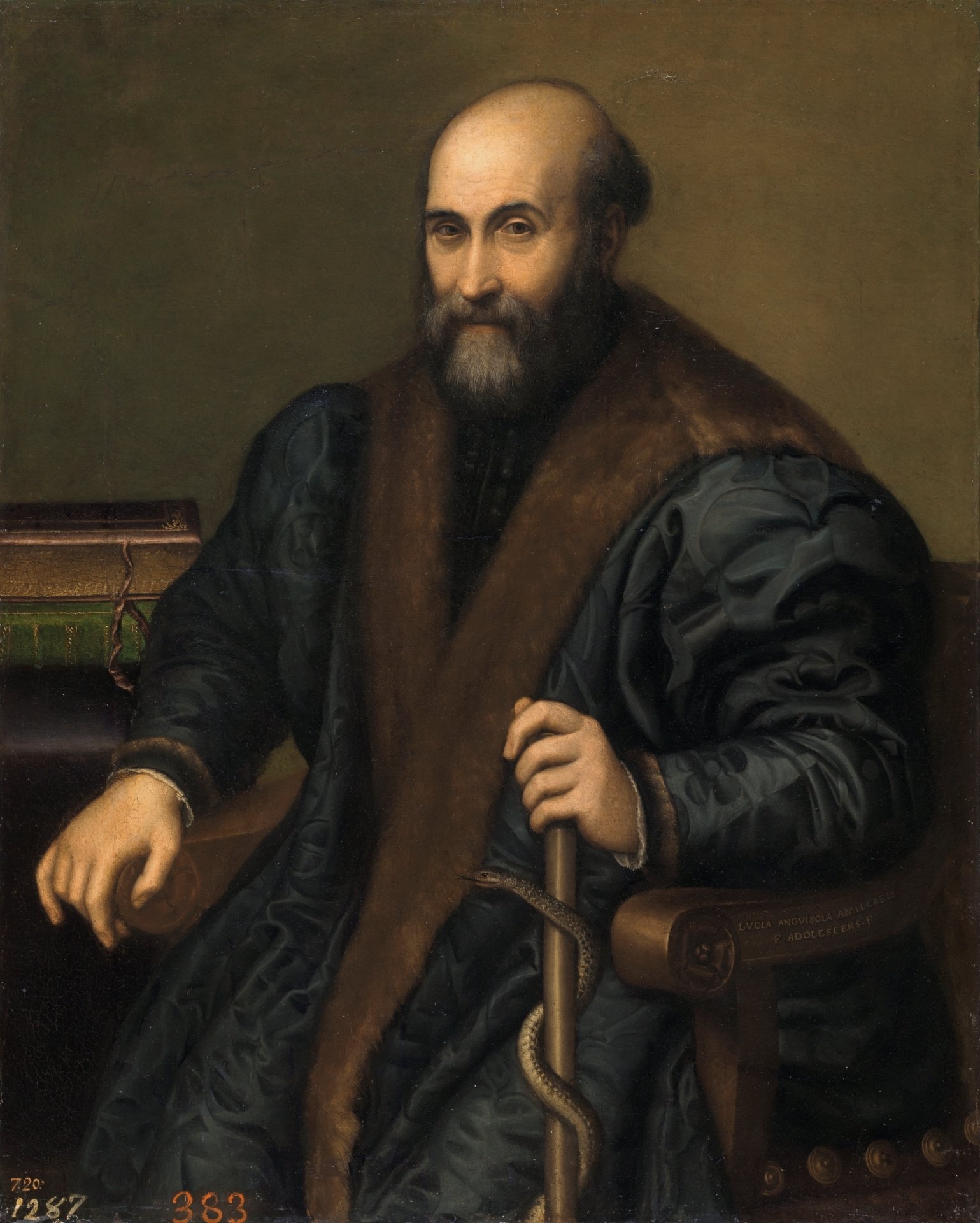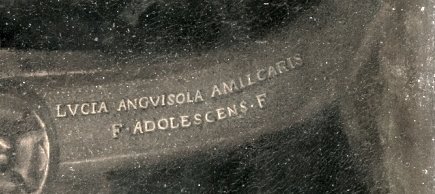Episode #100: Bits of "Breaking Barriers": Lucia and Elena Anguissola (Season 12, Episode 1)
For this season of ArtCurious, I’m doing something a little bit different. I’m treating you to renditions of eight of my favorite segments from Breaking Barriers: Women Artists of Renaissance Europe, my online course found exclusively at avid.fm. Every other week through January, I’ll share selections from Breaking Barriers, and encourage you that if you like it, you can purchase the whole course. Today, I’m sharing a story about the family of one of the most well-known female artists of the Renaissance. You might know a bit about Sofonisba Anguissola--but how much do you know about her sister, Lucia? And how about another Anguissola daughter? From Breaking Barriers: Women of Renaissance Europe, please enjoy “Lucia Anguissola (and Elena Anguissola): In Their Sister’s Footsteps.”
Please SUBSCRIBE and REVIEW our show on Apple Podcasts and FOLLOW on Spotify
SPONSORS:
Indeed: only pay for quality applications from resumes in Indeed’s database matching your job description.
Issuu: sign up for an annual premium account and get 50% off when you use promo code ARTCURIOUS
Canvasprints.com: Get 25% off of your entire order of canvas prints, canvas wall displays, metal prints, photo tiles, photo blankets and pillows, and much more when you use code ARTCURIOUS25
Want to advertise/sponsor our show?
We have partnered with AdvertiseCast to handle our advertising/sponsorship requests. They’re great to work with and will help you advertise on our show. Please email sales@advertisecast.com or click the link below to get started.
https://www.advertisecast.com/ArtCuriousPodcast
Episode Credits:
Production and Editing by Kaboonki. Theme music by Alex Davis. Logo by Dave Rainey. Additional music by Storyblocks.
ArtCurious is sponsored by Anchorlight, an interdisciplinary creative space, founded with the intent of fostering artists, designers, and craftspeople at varying stages of their development. Home to artist studios, residency opportunities, and exhibition space Anchorlight encourages mentorship and the cross-pollination of skills among creatives in the Triangle.
Recommended Reading
Please note that ArtCurious is a participant in the Bookshop.org Affiliate Program, an affiliate advertising program designed to provide a means for sites to earn advertising fees by advertising and linking to bookshop.org. This is all done at no cost to you, and serves as a means to help our show and independent bookstores. Click on the list below and thank you for your purchases!
Episode Transcript
We’re headed to Cremona, Italy, for today’s episode, back to the noble family of the Anguissolas.
If you've listened to ArtCurious before in the past, then you might be familiar with the Anguissola family, especially the most precocious child of the family, the eldest daughter, Sofonisba, who went on to live an extraordinarily long life and an exceptionally successful artistic career during the Italian Renaissance. Sofonisba was raised by a father, Amilcare, who greatly valued education for all of his children, not just his son, at a time when presenting girls with the opportunity to learn about classical thought and literature was uncommon, to say the least. And this was an educational opportunity that Elena, the second-eldest Anguissola child, and Lucia, the third-eldest enjoyed as well, just as Sofonisba had. Given that all three girls were taught under the same roof, it’s not surprising to note similarities between their works, especially in terms of subject matter. But what’s interesting about Lucia is that she seemed to have excelled at a faster rate than Sofonisba, her older sister, even if, overall, she wasn’t as inventive. And indeed, it looks like contemporary art critics expected her to outshine her famous older sister, and believed that she could have overtaken her, if it weren’t for the sad reality that Lucia died when she was just around 20 years old.
In the 1600s, her work was being praised by biographer Fillipo Baldinucci, an early art historian and artist biographer like his Renaissance counterpart, Giorgio Vasari, both of whom believed that in Baldinucci’s words, Lucia, would have graduated to becoming, quote, “ a better artist than even Sofonisba.”
Lucia and Elena both accompanied Sofonisba, their older sister, in being apprenticed to two local painters in their hometown of Cremona, and after their first teacher, Bernardino Campi, relocated to Milan, then Sofonisba took over teaching painting for all her younger siblings. I can only imagine that with multiple children in the same family all trying to achieve parity? in the same subjects that there was no lack of sibling rivalry in the Anguissola household. And as the other most talented of the bunch, besides Sofonisba, that is, it’s possible that Lucia felt this more keenly. This is a theory that has led to a particular kind of interpretation of one of Lucia’s best-known works, her self-portrait from 1557. In the painting, she presents herself sitting and holding a book in one hand, while her other rests on her heart. She’s dressed beautifully in proper, somber dark clothes of brown and black, with a lace collar and braided hair, but it is her expression that is most interesting. Unlike her sister’s portrait at the easel, Lucia’s face doesn’t project confidence or assurance. Instead, there’s a look in her eye that is harder to read-- is she more distant, guarded perhaps? There’s no relaxed expression, no little smile here to nod to her comfort in her own skin. It’s something that seems to set Lucia apart from her sister, especially Sofonisba’s own self portraits, which are much more assured. This appears to track with much of Lucia Anguissola’s works-- in the extant ones, meaning the works of art that have survived and that we have been able to fully identify as those by the hand of Lucia, many have noted that they are suffused with this sense of melancholy. And where does that melancholy stem from? In one publication, the catalog for the National Museum of Women in the Arts in Washington, D.C. featuring Italian artists, this portrait has been psychoanalyzed as Lucia’s feelings about being in her older sister’s shadow, of following in her footsteps, of feeling inferior.
Whether or not this is true, though, is impossible to know. Just like, in some cases, it’s even impossible to know that a work by Lucia is… actually by Lucia, and not Sofonisba, or another member of this ultra-talented clan.
To be fair, this actually isn’t an uncommon refrain. It’s one that you will hear a lot in the Breaking Barriers course: that it is always a little tricky to identify and determine authorship of works of art by women from earlier than the mid-to-late 19th century. Authorship is tricky in any time period, truthfully, but given that artists didn’t start actively signing their work until the Renaissance, there's an extra layer of difficulty here. Now, sidebar-- why is it that artists begin signing their works of art at this juncture in history, you ask? Well, we cover it fully in the first episode of our course, but in brief: the individual creator began to be praised for their creations, and artists started creating works on their own instead of working in a more collaborative guild system, where patrons would basically hire a group to create, for example, stonework for a new cathedral. But in a competitive, individualistic artistic marketplace, signing your name on a work of art was suddenly super important. But that doesn’t mean that it always happened or that it was even a common practice yet. And in Lucia’s case, that translates to only a couple of paintings that hold her signature. The most famous one, a work lauded by the artistic biographer and critic Giorgio Vasari , is Lucia’s Portrait of Pietro Manna, painted, most likely, between 1557 and 1560, and truly only known to Vasari after Lucia Anguissola had already died. To date, it’s the only known painting in existence in which Lucia signed her entire name, with an inscription reading, quote, “Lucia Anguissola Amilcaris F[ilia] Adolescens F[ecit],” with the two “F''s here as abbreviations for “filia” and “fecit,” respectively. In translation, this Latin phrase means “Lucia Anguissola, the adolescent daughter of Amilcare, made this.” Clearly, Lucia was proud of this painting and not only wanted to provide herself with the proper credit, but she wanted to honor her family, too, including her supportive father’s name in the inscription.
And there appears to be additional meaning for the Anguissola family in the Portrait of Pietro Manna itself. Manna, who was probably a relative of the Anguissola clan, is presented in a lush, fur-trimmed robe and seated while grasping a wooden staff, ornately carved with a winding snake, in his left hand. While some might be tempted to think of this rod as a caduceus, a symbol of medical practices used since ancient times, it’s not. For one, a caduceus typically is presented as two snakes winding together around a short, usually winged, staff. Here, there’s only one snake-and definitely no wings in sight. Historian Vida Hull, a professor at East Tennessee State University, has suggested instead that it is linked to the Anguissola family coat of arms, which breaks up the surname into two words and reads in full, quote, “Anguis Sola Fecit Vinctoriam,” translating to “the lone snake became victorious.” Interpreted in this light, the painting of Manna isn’t just a loving and energetic portrait of a family member, but a showcase, too, for Lucia’s education, showcasing her background in the Latin language and in Classical mythology. It’s no wonder that Amilcare Anguissola, her father, so proudly showcased this work of art to Vasari upon his visit to the family in Cremona. Hull believes it’s possible that Papa Anguissola considered Lucia to be as talented as his eldest daughter, Sofonisba. And indeed, it’s possible that, had Lucia survived long enough into adulthood and continued to paint at this level, we could be celebrating her work just as much, if not more, than her famed sister’s.
If, in searching around to find more information about the Anguissola sisters after this class, you happen to Google Lucia’s name, you are apt to find something interesting. The name “Lucia Anguissola” will call up images, more often than not, that are those attributed to Sofonisba, not Lucia. And this begs a question. With two artists whose works are so similar in their subject matter and style, do their attributions get mixed up? Are there more works out there by Lucia that might mistakenly be attributed to Sofonisba instead? This would really only apply to the oldest of pieces, works that were created when both women were teenagers or young adults, since Lucia died so young. But it is a possibility. And as more effort, research, and recognition is put toward these incredible artists, I hope that more of their pieces come to light.
We’re not done with the Anguissola family. Nope, not yet. Right after this quick break, we’ll be back to share the story of yet another talented Anguissola daughter, so stay with us.
Welcome back to ArtCurious.
Now, I mentioned at the beginning of the podcast today that Lucia and Sofonisba were the most accomplished artists in their incredibly fascinating family. But they weren’t the only ones. They were joined by each of the Anguissola daughters: Europa, Anna Maria, and Elena. From what little we know about the younger sisters, Europa and Anna Maria, they, too, studied painting alongside Sofinisba and Lucia, but once they married, they both shifted their priorities toward family life, as would have been expected as the norm, especially for women of their stature. Elena, however, followed closely in her elder sisters’ footsteps. Like the others, Elena learned at the hands of two local Cremona artists, Bernardo Campi and Bernardino Gatti. But as opposed to the younger Lucia, Elena and Sofonisba really went hand-in-hand, working closely together in Bernadino Gatti’s workshop and later moving on to Mantua, where they presented themselves to the court of the Mantuan rulers, the Gonzaga family, as painters of merit and talent. But somewhere around Elena’s twenties, she disappears from the record books, with the exception of a mention in her family’s surviving letters and her brother’s 1575 will and testament. But there’s a reason for this. It’s true that Elena probably did stop painting. But at this time she opted to take holy orders, becoming a Dominican nun at the convent of San Vincenzo in Mantua. As the tradition holds in some orders, women would adopt new “nun” names, if that’s a word, a new name to represent their new life and identity as the so-called brides of Christ. Fascinatingly, and super-confusingly, Elena adopted the name of Sister Minerva, which just happened to be the name of her little sister, Minerva Anguissola. We do have Sofonisba, though, to thank for at least one portrait of her saintly sister. In 1551, Sofonisba completed an image of Sister Minerva--her sister Elena-- dressed in the traditional white robes of the Dominican order, a color chosen by St. Dominic, the founding of the order, wore the color after receiving a vision of the garments in a dream, according to legend. She’s also donning a white veil or headdress, which often signifies a woman as a novitiate, or someone in the process of becoming a fully-fledged nun. Sofonisba captures Elena still in the blossom of youth, her cheeks tinted with a soft flush and her lips a perfect rosebud, both of which are highlighted to great effect by that pure whiteness of her habit. In her hands she delicately holds a leather-bound prayer book, and she--like Sofonisba would, and unlike Lucia-- looks out to us, the viewers, with serenity and conviction, giving us the sensation that she knows that she made the right choice in her life’s direction. Sofonisba, by the way, signed her name to this work of art.
Because she entered the convent and discontinued her career as a painter, we don’t have much extant work out there by Elena, but there is something--in the Galleria Borghese in Rome, there is a painting, dated from the mid-1550s, showcasing a Dominican nun, this time wearing a black veil, and holding symbols of Christ’s passion and of purity: a Crucifix piercing a small heart in her left hand, and white lilies in the other. This work represents not Elena, but another nun: Osanna Andreasi, a 15th century saint from Mantua most beloved by the Dominicans. Like the work of many women artists, this was assigned as a finished piece by multiple male artists of varying stature, based in and around Venice, Florence, and Sienna, before an art historian in the mid-20th century identified it as a work by… Sofonisba Anguissola. Not so fast, though. Only around the turn of the 21st century did scholars take a second look at the work, considering that it, a) bears a strong resemblance to Elena, as noted from the portrait that Sofonisba made of her in 1551, and that there was a precedence for nuns with artistic inclinations to paint themselves in the guise of holy figures as a way to showcase their admiration for them, as well as their dedication to acting like them. Elena would have known about the blessed Osanna Andreasi and could have easily represented herself as such. Plus, it’s a great piece-- but it is just slightly less refined than the 1551 portrait. Thus, the work has been officially reattributed, no longer cataloged as a Sofonisba Anguissola, but an Elena Anguissola.
I so appreciate you taking the time to listen to ArtCurious today-- thank you so much, and I hope you enjoyed learning a little bit about the great Anguissola family and their talented daughters. As I mentioned at the top of the show, it would mean the absolute world to me if you would register for my course, Breaking Barriers: Women Artists of Renaissance Europe. It’s on sale right now, 21 days, learn on your own time and at your own pace, and it’s fun--I promise. No quizzes or grades, either, just learning for the sake of good old fashioned learning! Please register now at avid.fm/jennifer, and not only will you get the entire 21 day course, but you’ll also receive a PDF with every episode featuring the images discussed and a recommended reading list. So again, that’s Breaking Barriers: Women Artists of Renaissance Europe, available now at avid.fm/jennifer.
I’ll be back with you again in two weeks to share another story from Breaking Barriers. Thank you, again, for supporting me while I research my next project--you are awesome. Remember that we’ve got exclusive video content coming at you over on YouTube. So check us out there-the link is in the show notes on your handy-dandy podcast app right now. Stick with me, and stay curious!












